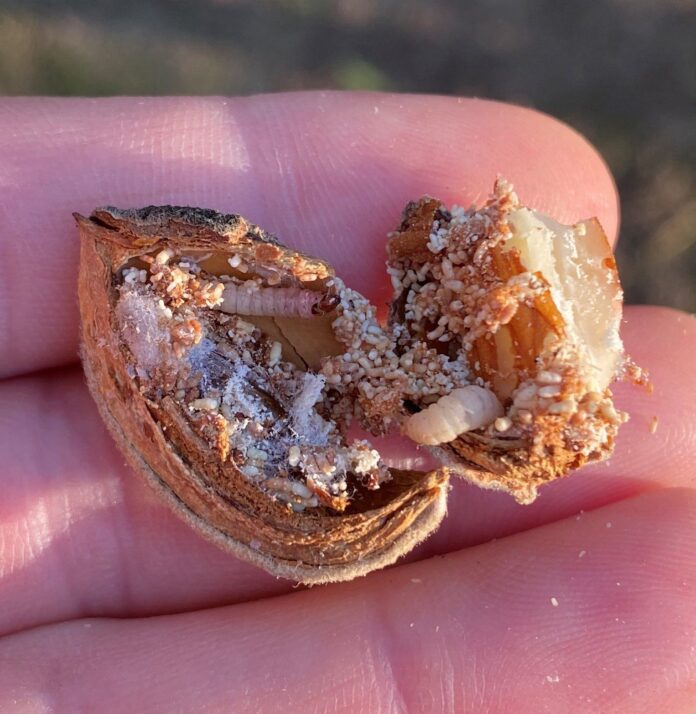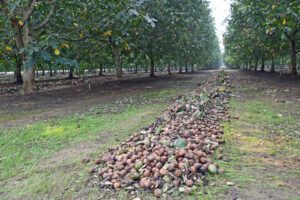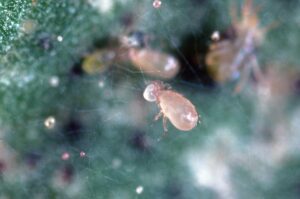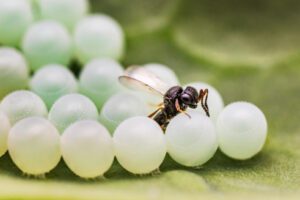
Biological products have been used in agricultural systems for decades and more recently have been shown to provide benefits beyond pest management. Before thinking about how to incorporate these tools into farming practices, it’s important to consider what goals you are aiming for and how these products can be used to help in achieving those goals.
Due to increasing regulatory challenges, particularly in states like California, there can be a lack of adequate options for growers who are trying to manage pests and diseases. Several previously available synthetic pesticides have been removed from the market or are under current regulatory pressure for future use. In addition, new challenges are emerging, such as the potential restrictions on fertilizer use and regulations around air and water quality. It is unlikely that future regulations will become less stringent, and there is a need to embrace new technologies that can help growers maintain profitability considering this regulatory environment.
Benefits of Biologicals
Managing resistance
Increased use of fewer remaining available chemistries can lead to potential for development of resistance for synthetic single-site products. Resistance development to synthetic pesticides has been growing rapidly since they were introduced. Fortunately, integrating biologicals into conventional programs, whether they are rotated or tank mixed, has been proven to slow resistance development to important synthetic tools due to their unique and multiple modes of action.
Managing Residues
For crops with important export markets, considering Maximum Residue Levels (MRL) to meet various geographic requirements can also be challenging. By crafting a program where biologicals can be used to replace some chemistries, especially closer to harvest, the MRL challenges can be met for successfully meeting buyers’ standards.

Regenerative practices
While there is no commonly agreed definition of regenerative agriculture (or regen ag for short), the term generally refers to farming principles or practices aimed at improving the overall environment with a strong focus on improving soil health and enhancing the benefits to society provided by agricultural systems. Other key benefits include mitigation of climate change through greenhouse gas emissions reductions and increased carbon removals, maintaining, preserving or restoring on-farm biodiversity, conserving water resources through improved water retention and decreases in water run-off, and improving the social and economic well-being of growers and communities. The move toward regenerative farming practices embraces several areas where biologicals can be key partners for achieving these goals.
Soil Health
In recognition of soil health as an important component of regen ag, American Pistachio Growers were recently awarded a $5 million grant for promoting soil health practices. Healthy soils require biology and biological products along with practices such as composting and including cover crops to help move production toward more sustainable practices. Improving soil health can have additional benefits for regions where water can be a limiting resource. USDA estimates that for every 1% increase in organic matter, soil can retain an additional 25,000 gal per acre. Were all the pistachio acres in California to increase their organic matter by only 1%, soil water capacity would increase by around 11.3 billion gallons.
Biodiversity
Agriculture and biodiversity are inextricably intertwined. Healthy crops depend on resilient ecosystems comprised of soil organisms, beneficial insects like pollinators, habitats for wild flora and animals that live in and around the crops, and even the genetic diversity of the crops themselves. At the same time, ensuring a safe and secure food supply involves changing how the natural environment and resources are used, and this has an impact on biodiversity. Biologicals typically have low impact on beneficial insects and soil biology and can even help increase biodiversity.

With increased fertilizer costs and in consideration of greenhouse gas emissions and run-off, finding tools that can improve nutrient use efficiency could be a real benefit for growers. Microbes are integral for moving nutrients from soil to roots. In a fairly recently studied process known as rhizophagy, it has been shown root-associated microbes are transporting key nutrients directly into plant root cells. Plants expend around 30% of their energy to make root exudates designed to attract beneficial microbes to their root systems. Once these beneficial microbes begin to colonize the root surfaces, the resulting symbiosis results in more complex and healthier root masses. Most interestingly, as these microbes are gathering nutrients from the soil, the root cells engulf the bacteria, taking them inside the root cells and stripping nutrients from them directly. This explains the term ‘rhizophagy’ or “root-eating.” After extracting the nutrients, the microbes are expelled from the root cells to reform and gather more nutrients for the plants. Providing the right biological products to crop roots can thereby increase nutrient uptake. In addition, the root-associated microbes can trigger stress tolerance pathways in the plant, helping crops manage through difficult conditions, such as heat, drought or too much water.
How to be Successful with the Use of Biologicals
Understanding biological products will greatly increase successful use of these important tools. There are a diversity of available biological products and therefore a number of different uses. Many of the products work by contact action, and therefore good coverage is very important for controlling pests or diseases. Knowing the mode of action of the biological product will help with getting the best application conditions and efficacy. Whether microbial or botanical in nature, biologicals are typically mixtures of components that may include a microbe as well as naturally derived compounds. This means manufacturing quality is very important to get reproducible products and results. Choose products with clear science supporting them, explanation of mode of action and security in manufacturing. Carefully reading label requirements for storage as well as compatibility with other agrichemicals will also improve outcomes.

Identifying the needs or goals of incorporating biologicals will help define when and how these products can benefit the farming practice. To manage MRLs to meet market demands, look for opportunities to replace some synthetic pesticides with biologicals. Since biologicals normally do not have regulated residues, use of them closer to harvest can lower pesticide residue levels in the harvested crop. If resistance management is a concern, either tank mixing or rotating biologicals in conventional programs will reduce pathogen or insect populations that are developing resistance to synthetic pesticides. As it is more and more difficult for industry to discover and develop new synthetic pesticides, growers need to use practices that keep current products on the market as long as possible. Biological products are different from synthetic chemistry and are best used in integrated programs. Testing biological products as if they were systemic pesticides, under high disease pressure with long intervals, will result in disappointing results. However, within an integrated system, biologicals can provide excellent results since they work best under low to moderate disease or insect pressure.
For products designed to help with improved nutrient uptake that rely on root colonization, apply during active root growth when root exudates provide stimulation for microbial products to start the process. During winter months when trees are dormant, exudates are not produced and therefore this application timing should be avoided. Getting plant health started early in the season helps plants tolerate less-than-perfect conditions later.

Since biologicals can have several different benefits for farming systems, the best measure of their value for growers is to include assessment of additional attributes that contribute to growers’ profitability. Yield and quality are often improved in systems incorporating biological products. Beneficial insect populations may also be supported and may result in lower need for some insecticide applications.
Agricultural biologicals are innovative nature-based technologies that can serve as an important part of many integrated crop management systems, often in the form of biocontrols and biostimulants. When complemented by leading varieties, digital tools and chemical crop protection, biologicals can help growers achieve the best results in their fields.















